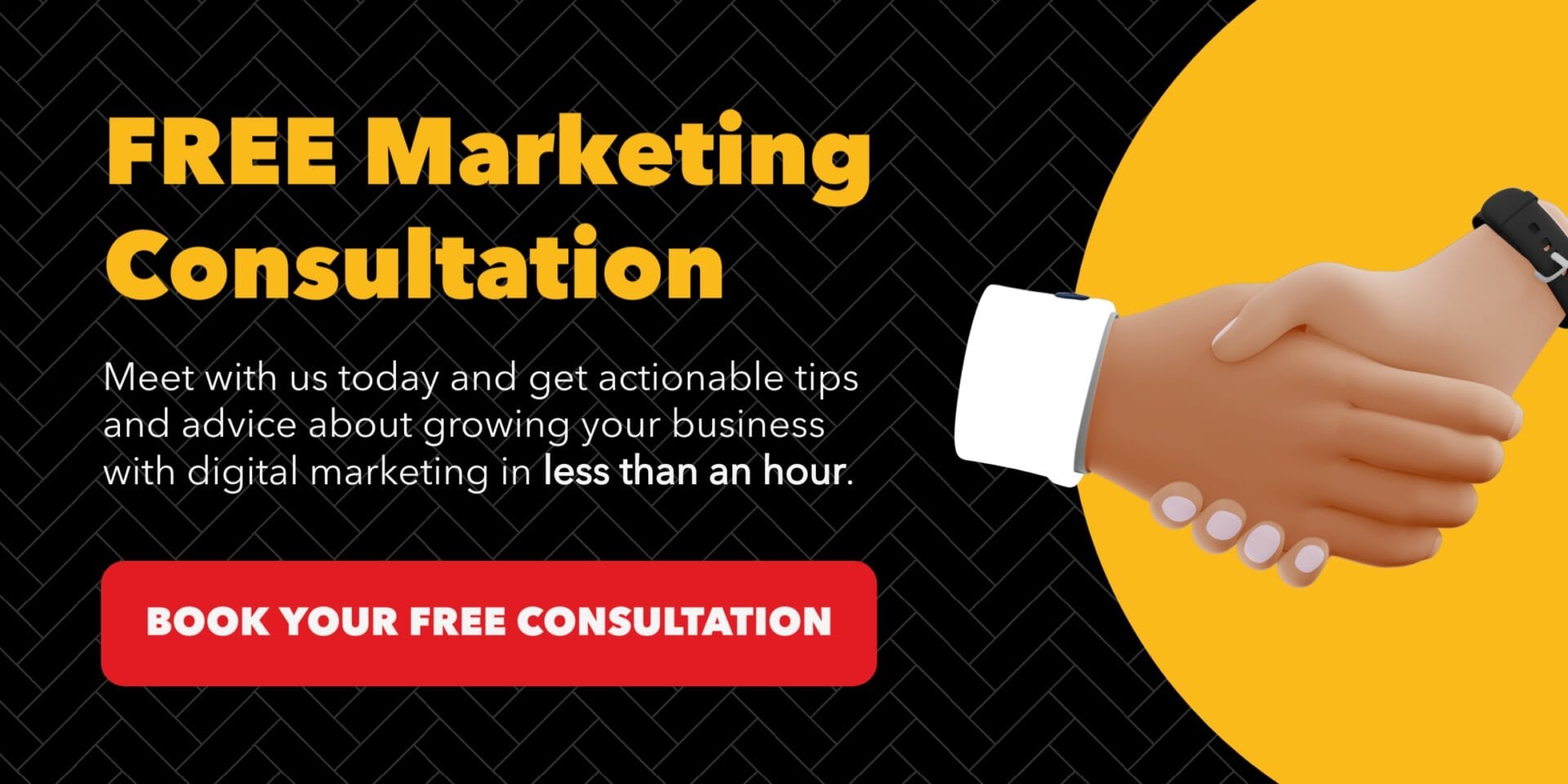If you’re a small business owner, you’ve probably had someone tell you that your business “needs to be on Social Media.”
And even if deep down you feel that it’s a true statement, what in the world does it even mean in practice? It’s as broad and nebulous as advice like “invest in real estate” or “buy bitcoin.”
Even if you are an absolute beginner, this article is going to give you a clear, ground-level introduction to understanding marketing your business on social media in 2021.

What Is Social Media, Really?
First, let’s define social media clearly because it’s one of those terms that not many people could give you a dictionary definition of, but everyone still knows what it is.
Social media is any website or app that lets users make accounts and then create and share text, photos, and other media. It then allows those users to participate in the social act of sharing what they created and networking with others.
Just remember that when someone refers to social media it generally means “an online place where people are creating, sharing things, and talking.”
Also, the text, photos, videos, and other media people create and share on social media platforms is typically called “user-generated content”
Some of the heavy-hitting platforms in the world of Social Media are Facebook, Instagram, YouTube, and Twitter, with some other growing platforms we’ll mention later.
(Also note: if you hear the word “platform” or “social platforms” in regard to social media, it’s just a broad, catch-all term that means app, website, or program. It’s basically the form the “platform” takes digitally for its users to interact with it.)

Social Media vs Social Media Marketing in 2021
There is a difference between “social media” and “social media marketing.” Social media is generally considered to be people interacting with other people, sharing, and talking.
Social media marketing is generally defined as using social media to drive sales, website traffic, and gain customers.
Social media marketing can be done by reaching out to people you are already connected with (this is referred to as “organic marketing” or “organic reach”), or by paying a fee on the social media platform to reach its users (referred to as “paid marketing” or “paid reach”).
For now, stick with organic until you get the hang of things. Then as you level up, you can start to consider putting a budget behind your efforts.
I Need to Be Everywhere, Right?
Actually, to start with, not at all. In fact, that can be a terrible marketing strategy.
You simply want to be where your perfect customer (often called a “target audience” or “target demographic”) is.
Every social media platform has its own set of users, demographics, and communities. Think of your ideal customer, and then try to research and understand what social media they might be using (think age, interests, and behavior).
When we’re talking about all of the platforms you can use, it’s sometimes referred to as “social channels,” but the term is pretty much interchangeable with “social media.” (When someone says “social channels” it’s typically a quick way to say “all of your social media platforms.”)
Many small business owners think they can grab the attention of more customers with the sheer reach of being on every social media platform possible.
Then they make the mistake of posting the same exact photos or messages (often just called ‘content’ as a blanket term) across all of the platforms.
That’s the social media equivalent of SPAM, and it can actually turn potential customers off.
If you’re browsing social media that’s based around photos like Instagram, you want to see eye-catching images. If you’re on Twitter, you’re looking for a bite-sized chunk of info that piques your interest to learn more.
Each platform has certain kinds of posts (or content) that perform well because of how its users commonly interact with it (we’ll go over some specifics with you in a moment).
Remember, unless you have a digital marketing team, you also need to keep up with this yourself, so let’s start simple and scale up– having fewer platforms to manage helps with this.
Now, take a deep breath, and we’re going to help you choose a single social media platform to get started on (yes, just one). You can do this.

Choosing the Right Platform
Choosing which social media account to focus on is fairly simple: don’t go with what’s trendy, go with the platform your best potential customers are on.
By posting where your customers already are, you’re more likely to get some real social media activity, which will only encourage you to keep the momentum going and continue to post regularly.
(But also, don’t be discouraged if you don’t get interactions at first, Rome was not built in a day and consistency is key.)
Here is a simple rundown of the mainstay social media platforms (as well as some newer ones to keep an eye on).
First, let’s talk about the trinity. These are social media platforms that are the most well-known and have stood the test of time. You can’t go wrong with any of these.
1. Facebook
Still the most popular and well-known social media platform on the planet with nearly 3 billion users. You can reach people of all ages, and it’s simple to use, so this is the one we recommend to start with.
2. Instagram
This wildly popular photo-sharing platform is an incredible place to showcase products. Using it as a catalog can help you increase your reach to customers you wouldn’t have reached otherwise.
3. YouTube
This video giant is another place to garner a lot of attention, but it’s competitive. Also, video content isn’t always easy to create. Unless you’re going to try live streaming or short-form video, don’t start off with this one.
Honorable Mention
- LinkedIn – Mostly for reaching other business owners. This can work but it takes commitment and time.
- TikTok – Fastest growing social media platform ever, so this is one to watch. It’s an amazing way to reach a younger audience if you can capture attention.
- Snapchat – Also skewing younger with its audience, this is not a platform for beginners, but if used properly (posting customer videos or stories) it can do very well.
- Pinterest – Another image-based site. Not a first choice as a starting point unless you’re looking to advertise products and attempt to sell things directly from the platform
Do You Need a Social Media Manager?
Here at Good Rep Media, we understand that your vision for growing your business may not include learning social media marketing.
Do you need a social media manager? Maybe. For you, it might make sense to hire our expert social media teams to build a well-researched social-media strategy that fits your business like a glove.
Our team understands the ever-shifting social media trends occurring, and we know how to provide a customer experience that sets you apart through your social media.
By using proven marketing tactics we’ll go beyond “social media management”, and help you increase revenue, reach more customers, and spread the word about your business.
We’ll worry about marketing trends so you can focus on serving your customers. Let us give you a free consultation today.





